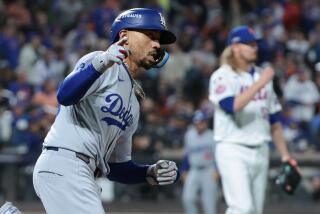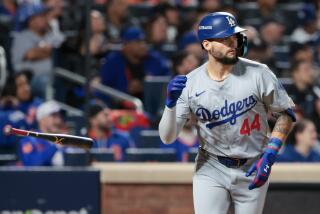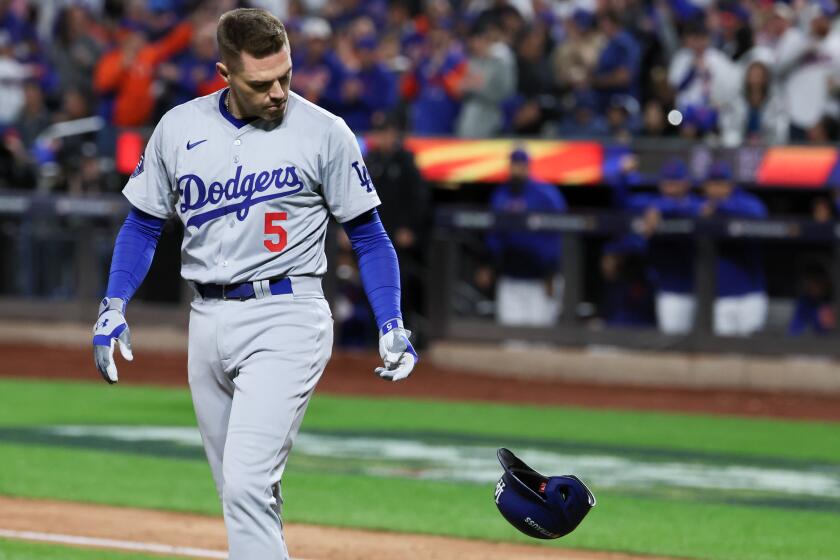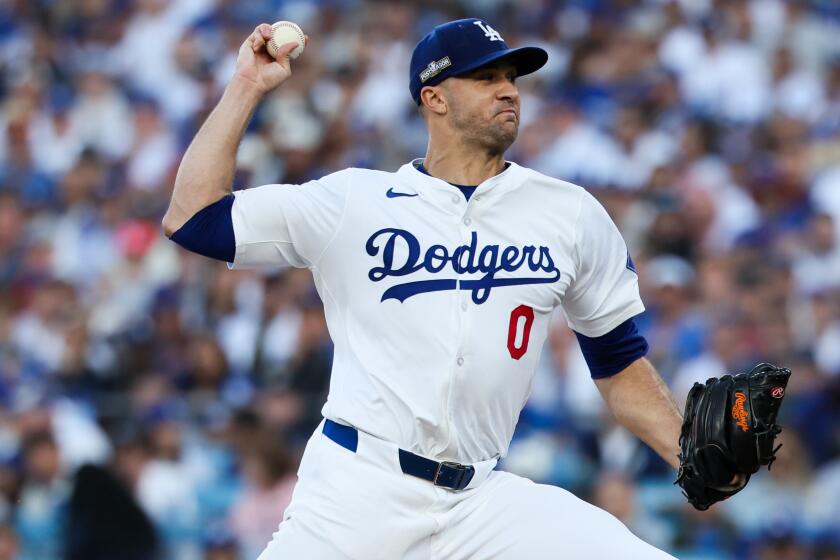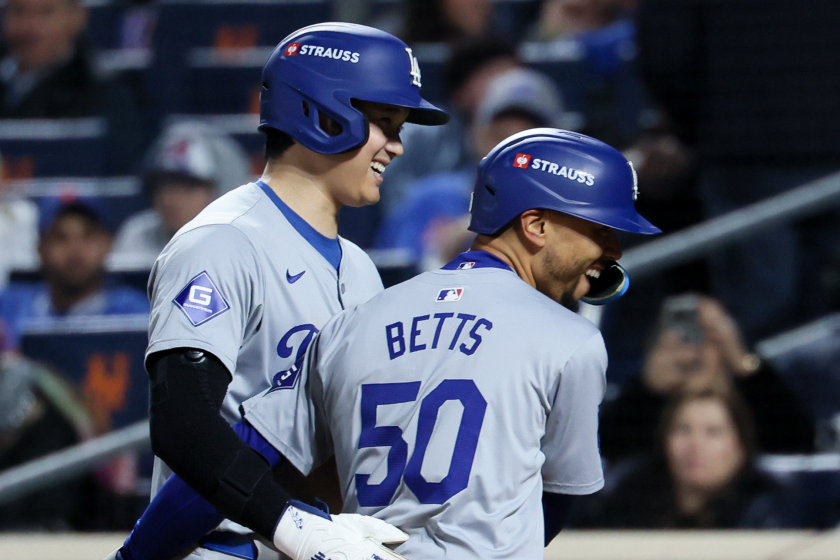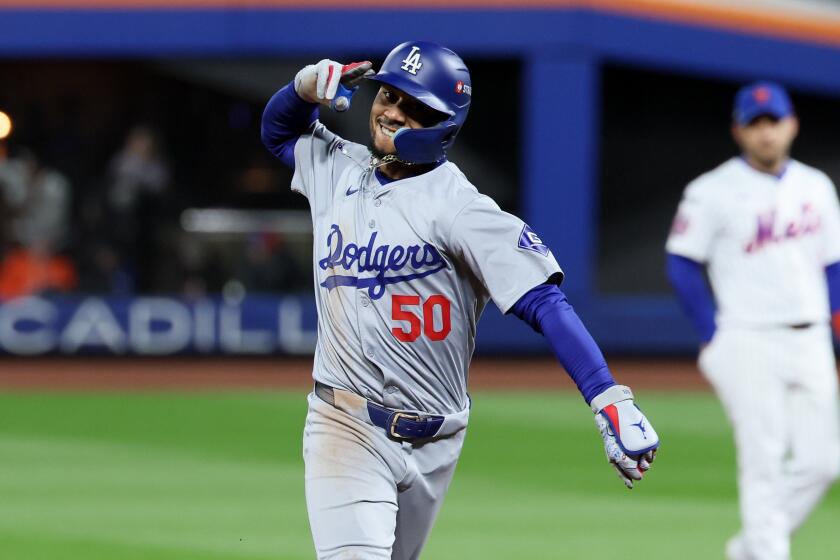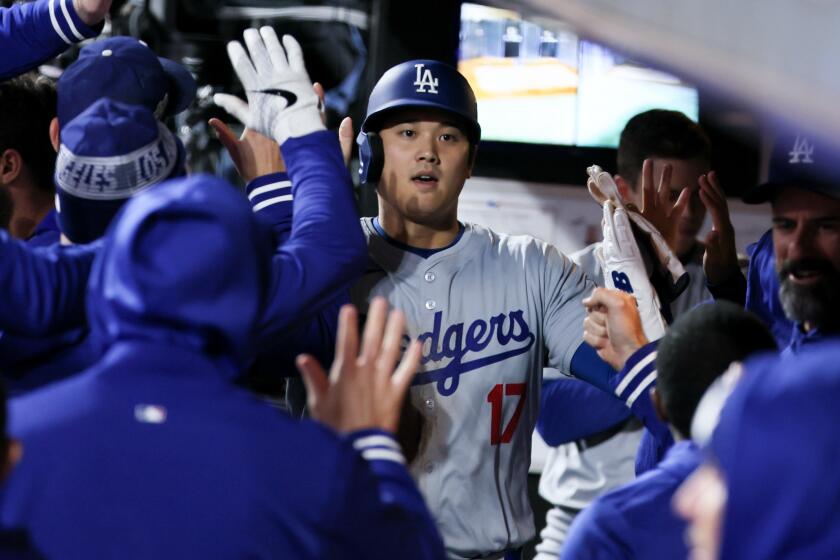Non-Signing in ’97 Was Actually a Sign of Things to Come
It was one of the darkest days in Dodger history.
I’m not talking about Friday, although it certainly qualifies because that’s the day word leaked that the franchise had traded its franchise player, Mike Piazza.
I’m talking about that fateful day in January 1997, when the team’s administrative triumvirate--owner Peter O’Malley, Executive Vice President Fred Claire and chief contract negotiator Sam Fernandez--spurned Piazza’s effort to become a Dodger for life, signing him for two years at $15 million instead of the six years at $60 million he wanted.
Signing Piazza for $10 million a year would have been the going rate at the time for a player of his caliber and a bargain long before the contract expired, which the Dodgers proved with their offer this spring of about $80 million for six years.
If the Dodgers had made the deal with Piazza they should have made in January 1997, this one with the Florida Marlins wouldn’t have been necessary.
They would have had the game’s best-hitting catcher, a future Hall of Famer, and one of the most popular players in franchise history under contract through his prime and enough money left over to rebuild a team around him while maintaining the payroll at around $50 million, hardly excessive in today’s baseball economy.
But the Dodgers of January 1997 weren’t very smart.
It has been a long time since the Dodgers were very smart.
Only now can we begin to assess the damage done to the franchise on the night 11 years ago that Al Campanis self-destructed on “Nightline.”
Campanis, of course, had to go. But when he went, so did the last true baseball man in the front office with a link to Branch Rickey and the “Dodger Way to Play Baseball” that proved so successful in Brooklyn in the ‘40s and ‘50s and Los Angeles in the ‘60s and ‘70s.
Claire can claim a World Series championship in 1988, his first full season as Campanis’ successor, and deserves credit for signing the free agent essential to that triumph, Kirk Gibson.
But perhaps it came too easily. With a commitment to the farm system and a restrained budget, as admirable as that might be, Claire acted as if he believed the Dodgers were never more than a player or two short of winning it all again.
When the Dodgers reached the playoffs only twice in the next nine seasons and failed both times to so much as win a game, Claire should have known better.
Instead, he emerged from the most recent off-season optimistic that the Dodgers were contenders, although they had no proven center fielder or closer, no left-handed power in the lineup or on the bench, no left-handed starting pitchers and an increasingly adversarial relationship between management and Piazza.
Through Thursday night, that team was two games below .500, seven games out of first place in the NL West and had just lost three of four games at home to a Philadelphia team that won only 68 games last season.
The Dodgers had to do something.
It is significant that they did it without much input from Claire, probably an indication that he’s on his way out after this season as general manager.
If that comes to pass, no one in baseball will cheer. Claire is a gentleman respected for his integrity and passion for the game.
But if this trade tells us anything, it is that the Dodgers started getting smarter the day Rupert Murdoch bought them.
Put together by President Bob Graziano, the executive vice president in charge of the Dodgers’ business side before O’Malley sold the team, and Chase Carey, one of Murdoch’s lieutenants, the deal was the best the Dodgers could do in a bad situation.
They started with the premise that they couldn’t meet Piazza’s demands of $100 million for seven years and have enough money remaining in their budget to fill the obvious holes in the team.
Accepting that, they either had to trade him or lose him at the end of the season as a free agent with only a couple of high draft choices as compensation.
The key to the deal was Charles Johnson. If the Dodgers couldn’t have the game’s best offensive catcher, they would have the game’s best defensive catcher.
They also got a once-great hitter who could be great again and everyday left fielder in Gary Sheffield, a switch-hitting third baseman to replace Todd Zeile in Bobby Bonilla, a reliable left-handed bat off the bench in Jim Eisenreich and rookie right-hander Manuel Barrios.
No one knows how they will play as Dodgers. Sheffield is no angel. Bonilla is 35 and coming off Achilles’ tendon surgery. Eisenreich is 39. The player to be determined might never be more than a prospect.
But the Dodgers could have gotten a busload of prospects for Piazza and Zeile, which the Marlins apparently will do, and chose instead to import four players who played significant roles in a World Series championship last season and see if they could do it again this season. The Dodgers aren’t surrendering.
Still, it was a sad day for them Friday, when they played their first post-Piazza game.
It will be an even sadder day when Piazza is inducted into the Hall of Fame in a Phillie or Oriole or Yankee uniform.
It didn’t have to be that way, if the Dodgers had been smarter in January 1997.
More to Read
Are you a true-blue fan?
Get our Dodgers Dugout newsletter for insights, news and much more.
You may occasionally receive promotional content from the Los Angeles Times.
